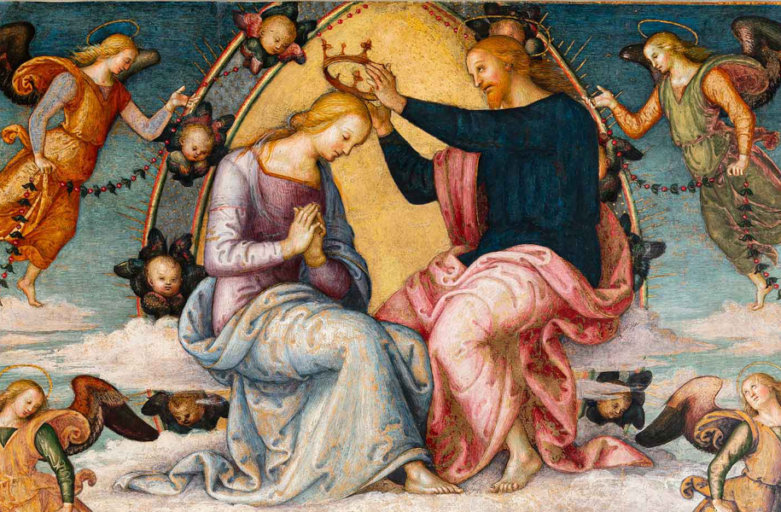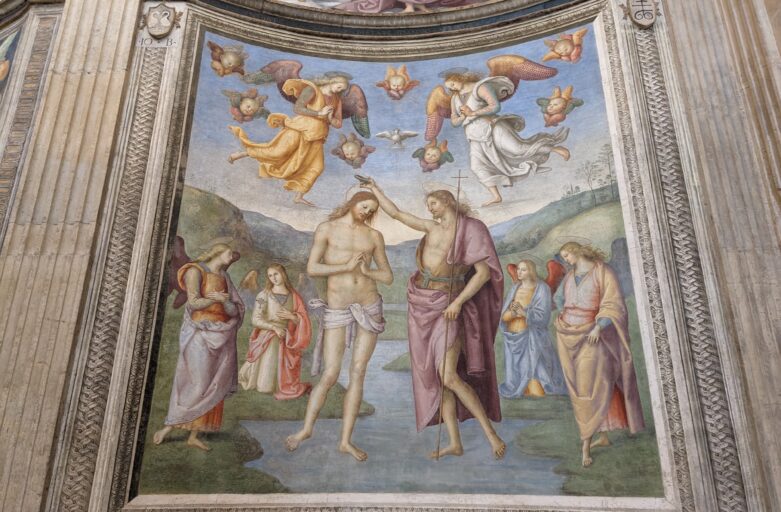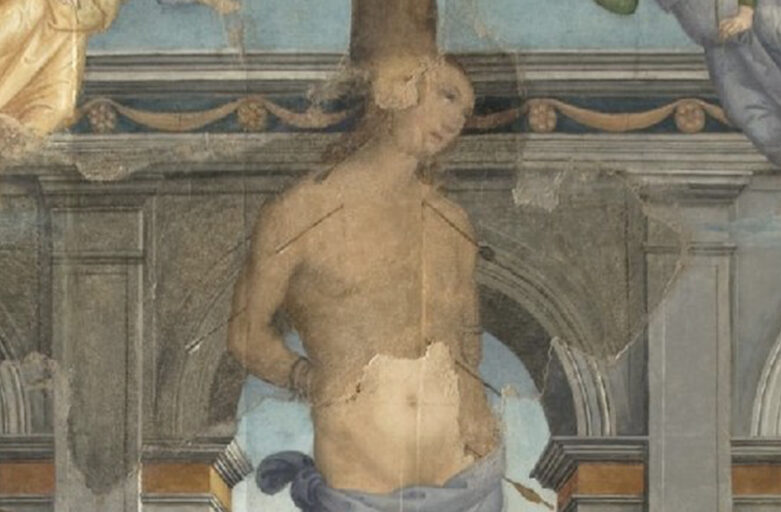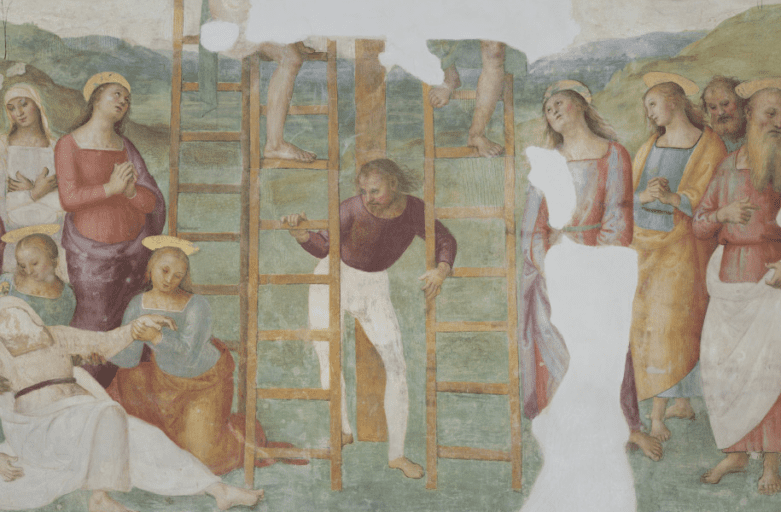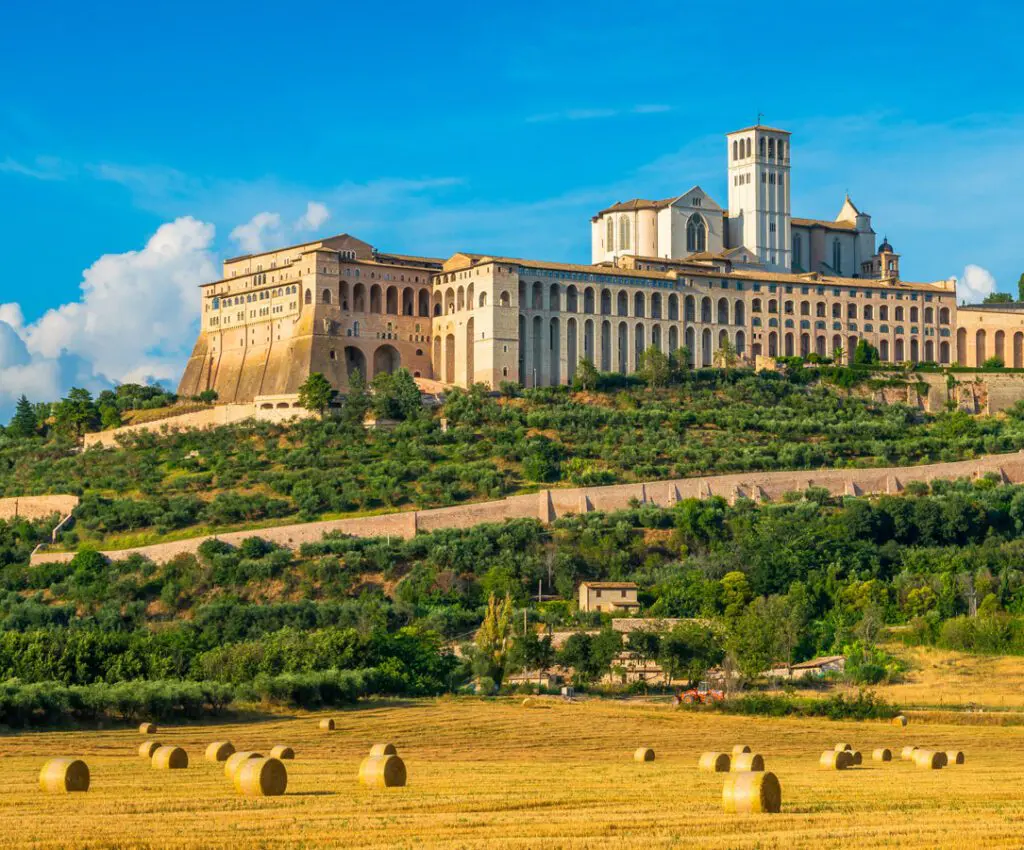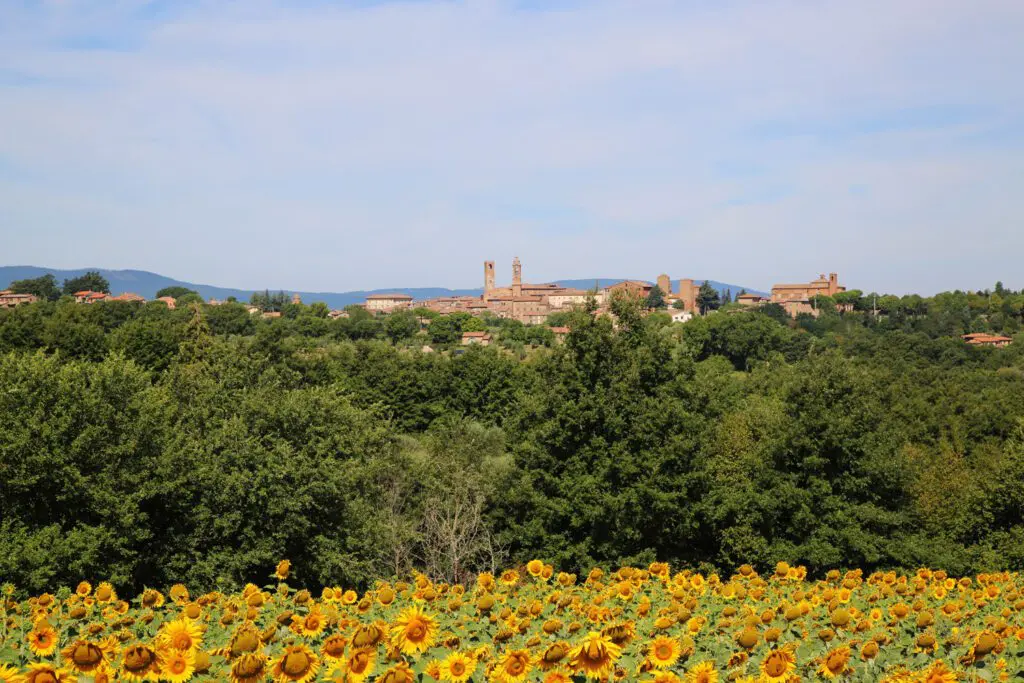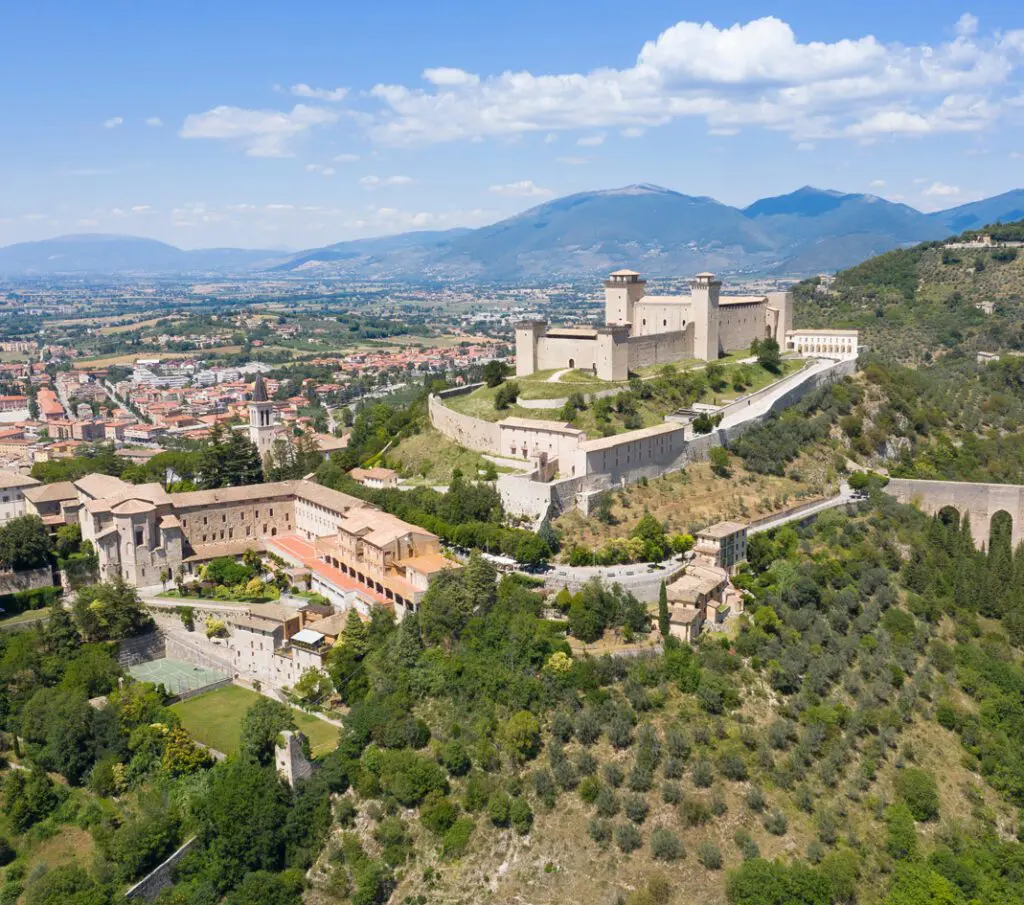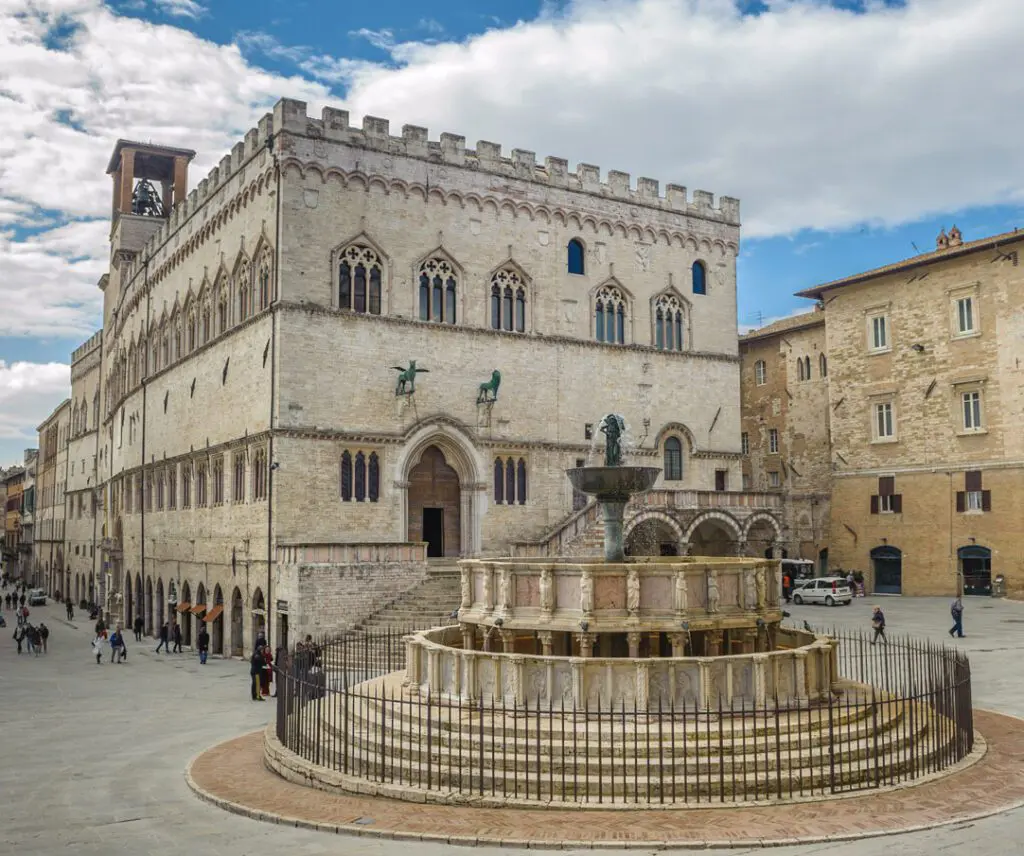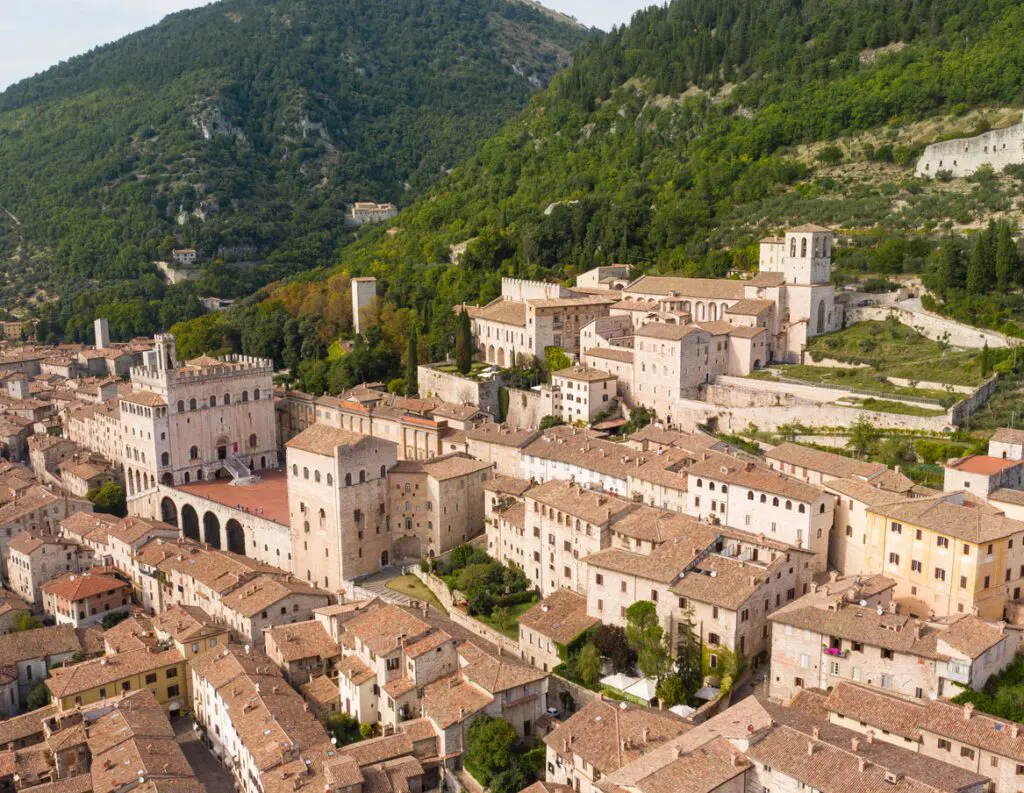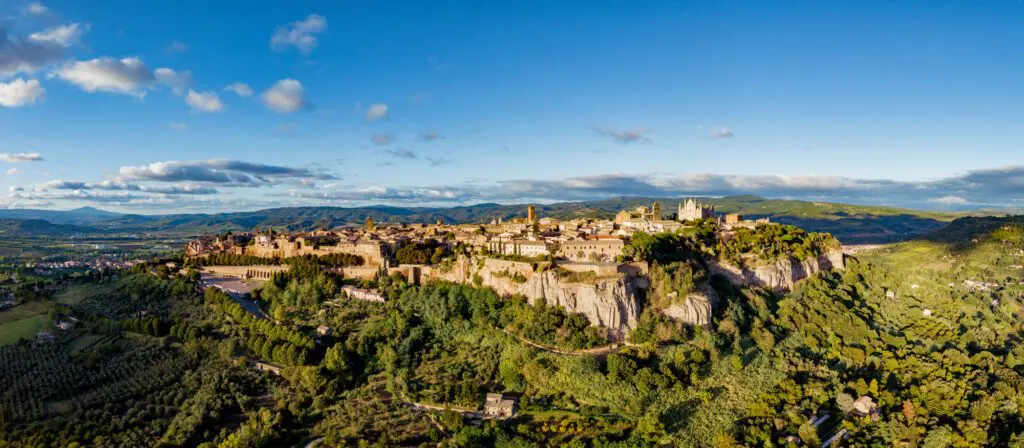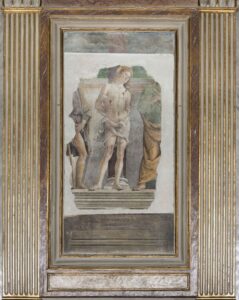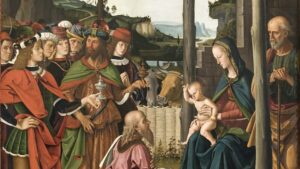The “opistograph” altarpiece of Monteripido; i.e., Perugino’s two-faced painting in the National Gallery of Umbria
The “Monteripido opistograph altarpiece” was painted by Perugino between 1502 and 1504. It was destined to the church in the monastery of San Francesco al Monte (“Saint Francis’ monastery in the mountain/hill”) in Perugia, also known as Monteripido, “steep slope.”
The word “opistograph” indicates a document that is written on both faces of the page. In the field of art, it means that the altarpiece has been painted on both its recto (front surface) and verso (back surface).
The front surface: a mix of painting and sculpture
This work of art is a mix between painting and sculpture. On its recto, in fact, a late Medieval wooden sculpture of Christ on the cross has been set; it had been commissioned by the Franciscan friars for the high altar in Saint Francis’ Church at Monteripido. The Crucifix’s style recalls a very similar work in Saint Peter’s Basilica in Perugia, which had been made by Giovanni Tedesco in 1478. This leads us to us think that both sculptures were made by the same artist.
Jesus’ expression is dramatic, tragic: his face is pale, his veins in relief, the wounds bleed. His head, resting on his chest, is enveloped in a crown of long, sharpened thorns.
Saint Francis of Assisi at the Cross’ feet
Perugino completes the Calvary scene with two figures who, according to the Gospel, were actually there, at the cross’ feet. We see in fact Virgin Mary (on the left) and Saint John the Evangelist (on the right), both standing. As for the kneeling figures, they are Mary Magdalene (left) and Saint Francis (right). The latter’s appearance in the painting had probably been requested by the clients, who were precisely friars of the Franciscan Order.
In the upper part of the scene, on both of Christ’s sides, are two flying angels. Each of them gathers in a cup the blood that falls from the wounds in the Savior’s hands. Above the horizontal beam of the cross, the Sun and the Moon shine at the same time in the sky; they are the symbols of respectively Christ plus the New Testament and the Hebrew people plus the Old Testament. Jesus amid the two heavenly bodies signifies therefore the union between Jews and pagans, the Old and New Covenant of humankind with God the Father.
The back surface: The Coronation of the Virgin
On the verso of the altarpiece the Coronation of Virgin Mary is shown, divided in two parts. In the upper part, Jesus lays the crown on Mary’s head, who bows gently while angels and putti (Cupid-like or angel-like children), with flowers in their hands, encircle them. The two main characters are included in a golden “almond” that separates them from the common environment. In the lower part, the Apostles are depicted as looking at what happens above. We can see Saint Peter in the middle of the group on the left; he can be easily recognized thanks to the “key of Heaven” he holds in his hand.
According to the contract for this work, the altarpiece should be adorned with a predella (a platform, a painted strip divided into several scenes) with the stories of two Franciscan saints, Bernardine of Siena and Bernardine of Feltre; but no traces of it have ever been found.
From the Monteripido Church to the National Gallery of Umbria
The altarpiece was taken away by the French during the Napoleonic campaigns, and transported to France. In 1817 it was returned to the monastery of Monteripido; here, it was set on the high altar, the Crucifix turning toward the people in the nave. In 1863, however, the altarpiece would become an item in the collection of the National Gallery of Umbria, where it is still nowadays on exhibition.
Discover the testimonies of Perugino today
Routes and itineraries to discover the works of the divine painter
